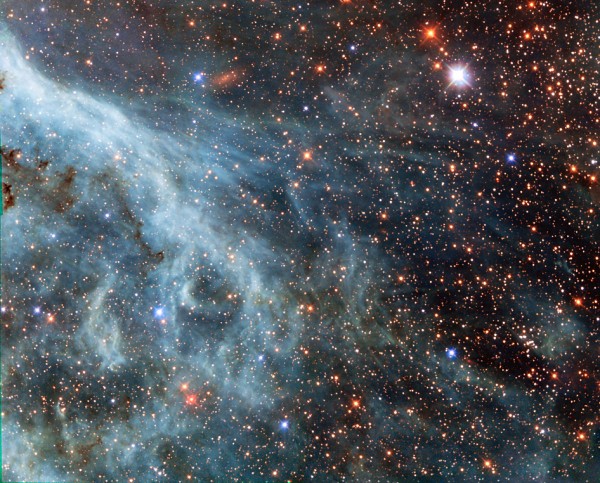

This colorful sea of gaseous materials lurks about 50,000 light-years from Earth in the Large Magellanic Cloud (LMC); one of the satellite galaxies of the Milky Way. It lies right along the outermost edge of the LMC’s most famous stellar nursery, known as the Tarantula Nebula.
All the way here on Earth, the LMC merely takes on the appearance of a big, indistinguishable blob, when it actually holds the mass of well over ten billion Suns (it, however, only has a fraction of the mass the Milky Way does, about 1/10th as much, to be precise). The pictured turquoise-colored filaments are, of course, the site of star formation.
Given how well-known the Tarantula Nebula is,it’s more likely than not that you’ve seen it before and it almost certainly didn’t look like this. This image looks much different because of the filters that were used.
From NASA:
The customary R filter, which selects the red light, was replaced by a filter letting through the near-infrared light. In traditional images, the hydrogen gas appears pink because it shines most brightly in the red. Here however, other less prominent emission lines dominate in the blue and green filters.
This data is part of the Archival Pure Parallel Project (APPP), a project that gathered together and processed over 1000 images taken using Hubble’s Wide Field Planetary Camera 2, obtained in parallel with other Hubble instruments. Much of the data in the project could be used to study a wide range of astronomical topics, including gravitational lensing and cosmic shear, exploring distant star-forming galaxies, supplementing observations in other wavelength ranges with optical data, and examining star populations from stellar heavyweights all the way down to solar-mass stars.
The reprocessing was done for a competition for ‘Hubble’s Hidden Treasures‘ by contestant Josh Barrington.
See a larger image here.